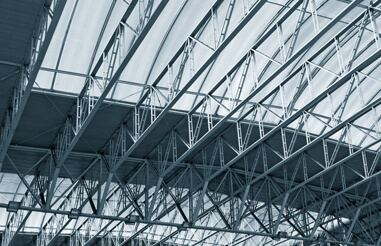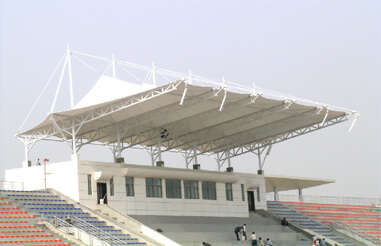Integrated Article: Differences Between Steel Truss and Space Frame
The continuous development in construction technologies has brought the Steel Truss and space frame into the spotlight. Despite their growing popularity, the differences between these two structural systems remain less understood. Here, we delve into the distinctions and unique characteristics of steel trusses and space frames, highlighting their structural nature, basic units, design requirements, and development history.
Structural Differences
Steel Truss Structure: The steel truss is analogous to a planar truss structure and operates under a unidirectional force system. The stability of the truss is primarily managed by the top chord, and increasing the width of the truss enhances stability in all directions, thereby conserving the quantity of steel used. This makes steel trusses particularly suitable for structures with a width to height ratio greater than 1.5, such as rectangular buildings, where they often function under unidirectional stress.

Space Frame Structure: In contrast, the space frame is an overall spatial truss structure characterized by its high surface rigidity. It is a bidirectional stress system, capable of being supported by multiple points. Space frames excel in distributing loads evenly and are versatile in design, capable of forming complex shapes like domes and arbitrary curves. This structural system can support significant loads and span large areas without the need for internal columns.

Basic Units and Design Requirements
Basic Units: The fundamental units of a space frame are typically triangular cones, trigons, squares, and truncated quadrangle cones. These units contribute to the three-dimensional integrity and strength of the space frame. Conversely, steel trusses are composed of straight rods forming triangular units, and these rods primarily bear axial tension or compression.
Design Requirements: For space trusses, it is crucial to have compliant rods and robust connections, which include rivet, pin, and weld joints. The rod sections in a space frame must be designed based on strength and stability calculations to ensure structural integrity. On the other hand, steel trusses require an additional bracing system to maintain stability, as they do not inherently bear vertical loads.

Development History and Advantages
The steel truss has evolved from the space frame, leveraging its unique advantages and practicality. While space frames are complex and robust, steel trusses are favored for their economic efficiency and adaptability to various building forms, particularly in large-scale public structures like exhibition halls and stadiums.
With the continuous growth in steel production, the application of Steel structures is expected to increase. The steel pipe structure, a variation of the steel truss, has significantly advanced, combining functionality, aesthetic appeal, and economic efficiency. Steel trusses offer advantages in material savings and versatility, especially in designs requiring dome shapes or arbitrary curves.
Conclusion
In summary, while both steel trusses and space frames offer significant benefits in construction, they serve different structural and design purposes. Steel trusses are ideal for unidirectional stress systems and rectangular buildings, offering economic material usage and adaptability. Space frames, with their bidirectional stress capabilities and high surface rigidity, are suitable for complex, large-span structures. Understanding these differences helps in selecting the appropriate structural system for specific construction needs.
RELATED NEWS
- Efficient Canopy Structures: Enhancing Gas Station Functionality and Aesthetics 2024-07-05
- Gas Station Construction Budget: How Much Does It Cost to Build a Gas Station? 2024-07-04
- Eight Key Factors in Aluminum-Magnesium-Manganese Roof Design 2024-07-04
- What Are Roof Purlins? What Are the Principles of Roof Purlin Layout? 2024-07-03
- Characteristics of Hangar Tents 2024-07-03
Categories
Latest News
Contact Us
Contact: Mr.Lu
Phone: +86-51668601029
E-mail: hbktech@163.com
Whatsapp:86+15152106218
Add: 1412, Building 2, Vanke Huaihai Xintiandi, Block 3, Quanshan District, Xuzhou City, Jiangsu Province
